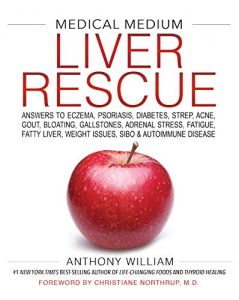When I was in my mid-40s, I would start sweating either during meals or right after. I remember thinking at the time, “Wow! Could I be starting menopause?”
My doctor at the time said I was too young for menopause; instead, my liver was having trouble digesting fat. She put me on a fat digestive enzyme, and I took it for several years. I eventually went off of it and no longer had the issue.
Fast forward several years, and again I was having hot and sweat episodes, but they were more severe and frequent. And this time, they were combined with other symptoms, such as waking up multiple times at night, extreme brain fog, and weight gain. During the worst of it, I could barely get through the day.
When it’s not menopause
Guess what? The doctors couldn’t figure it out. Part of the confusion of what was wrong was due to my age and one of the symptoms being hot flashes/sweating. Doctors would immediately put me in the menopause box and start talking about hormones. I was on BHT (bioidentical hormone therapy) for years, then realized I didn’t think they were helping.
Somewhere along the way, I started questioning whether some of my symptoms could be liver-related. I say “some” because I had a feeling that multiple things were going on.
Help was found
 After nearly three years of struggling with symptoms, I finally found help. In April 2019, I gave in and bought the book, “Medical Medium Liver Rescue: Answers to Eczema, Psoriasis, Diabetes, Strep, Acne, Gout, Bloating, Gallstones, Adrenal Stress, Fatigue, Fatty Liver, Weight Issues, SIBO & Autoimmune Disease.” I had seen it for several months, but to be completely honest, I was a little concerned about getting overwhelmed, as I was when reading his first book. But as I was reading this book, I had “ah-ha” moments over and over again. I couldn’t put it down! So much of what he said spoke to me. Finally, I felt like my symptoms did have a cause, and I had found hope that I could do something about it.
After nearly three years of struggling with symptoms, I finally found help. In April 2019, I gave in and bought the book, “Medical Medium Liver Rescue: Answers to Eczema, Psoriasis, Diabetes, Strep, Acne, Gout, Bloating, Gallstones, Adrenal Stress, Fatigue, Fatty Liver, Weight Issues, SIBO & Autoimmune Disease.” I had seen it for several months, but to be completely honest, I was a little concerned about getting overwhelmed, as I was when reading his first book. But as I was reading this book, I had “ah-ha” moments over and over again. I couldn’t put it down! So much of what he said spoke to me. Finally, I felt like my symptoms did have a cause, and I had found hope that I could do something about it.
The liver’s soldiering-on is why it’s very common for people not to exhibit their first symptoms of sluggish liver until their late 30s or into their 40s—at which point, in women, it’s often mistaken for menopause. What seems like the sudden onset of hot flashes, irritability, and insomnia actually isn’t sudden at all. It’s the result of a lifetime of sluggish liver building up and up and up and just now making itself known after decades. – William, Anthony, Medical Medium Liver Rescue (p. 52). Hay House. Kindle Edition.
Body temperature fluctuations, brain fog, weight coming on in the middle of the body: while we’re led to believe they’re thyroid-caused, the truth is they have liver stamped all over them. – William, Anthony. Medical Medium Liver Rescue (p. 82). Hay House. Kindle Edition.
Giving my liver a break
Now the question was, “What do I do next?” I immediately made some diet changes, but I felt like my liver needed more care and attention. The idea of giving my liver a break appealed, and although I typically avoid anything called a “cleanse,” after some deliberation, I decided to do the 9-Day liver cleanse recommended in the Liver Rescue book. I thought, “I can do this!” after all, it’s only for nine days. Right?
During the cleanse, I noticed a difference in my symptoms, mainly less hot/sweat. What it said to me was that I was on the right track. I did have some challenges with the cleanse, but overall I’m glad I stuck with it and made it to Day 9!
I would highly recommend you strategize on when to do the cleanse. If I do it again, I will plan on ending on a weekend that I can block out any other commitments. Days 8 and 9 were the most challenging, and having some downtime would have helped me.
Supporting my liver to start healing
Reading the book and doing the cleanse was a good start. I discovered that my liver was struggling, and part of the overload was when digesting fat. I learned to give my liver what it needed and avoid foods that caused it trouble.
What the liver needs
Glucose is food for the liver. An excellent way to get that glucose is fresh, raw fruit.
For nine years, I was on a low-carb diet that put fruit in the “bad” sugar and high-carb category. Although unintentionally, I had denied my liver what it needed most.
I believe that not eating fruit due to that diet, starved my liver and set it up for crisis-mode; however, I expect other factors also contributed.
Now I feel that fruit is an essential part of my diet and know that Fruit isn’t bad sugar. A great resource for learning about the extra value of fruits, and veggies is the book Life-changing Foods.
Liver overload causes heat
My overheating was caused by a sluggish liver that had to work extra hard on digesting fat. Sure enough, I noticed that on the days I ate more fat, I had an increase in heat and sweat. Unfortunately, this applied to all fat: animal protein and good fat as well. I started limiting my animal protein to once a day and made sure to choose the least fatty protein I could. I backed off of almond butter, coconut oil, and avocado. Sometimes I avoided animal protein altogether and chose a vegetarian option instead.
I believe it has helped, but I’m still careful about my fat intake, and I went back on a fat digestive enzyme figuring any extra support I could give my liver wouldn’t hurt.
Continuing to get better
I still have some symptoms; however, I’m feeling so much better. I’m sleeping well, and have my energy back. The hot/sweat, body temperature changes have decreased dramatically. Although I still have them, they are a lot less severe and not nearly as frequent. I consider that a win and know that as I continue to care for my liver, it will continue to heal.
